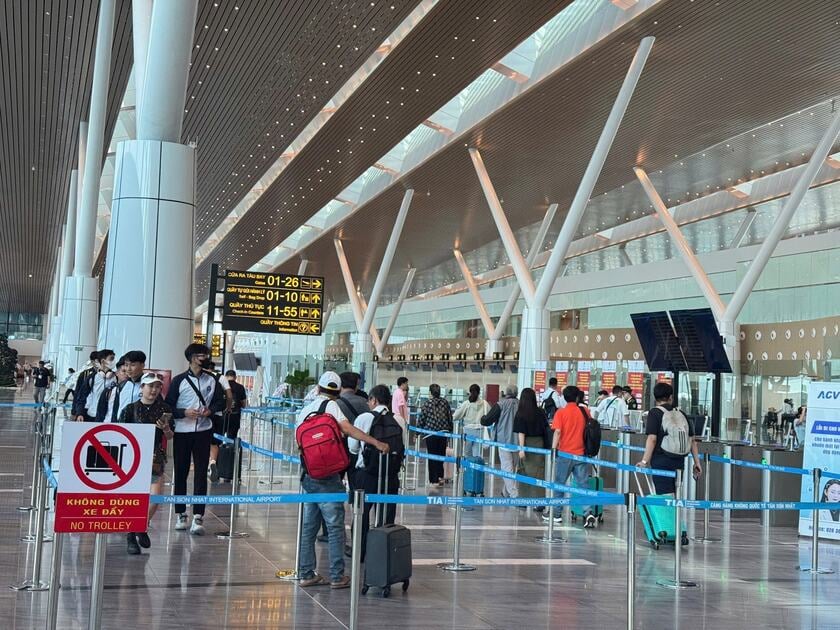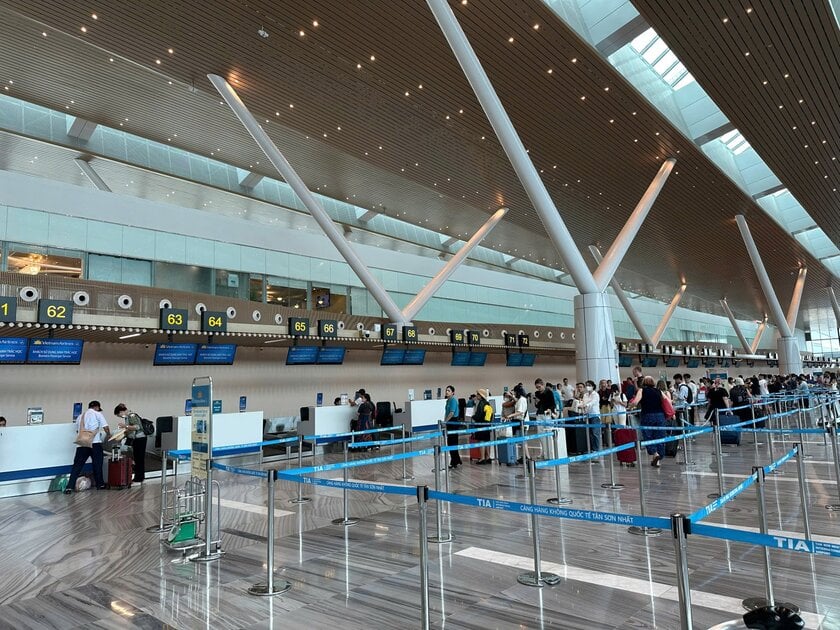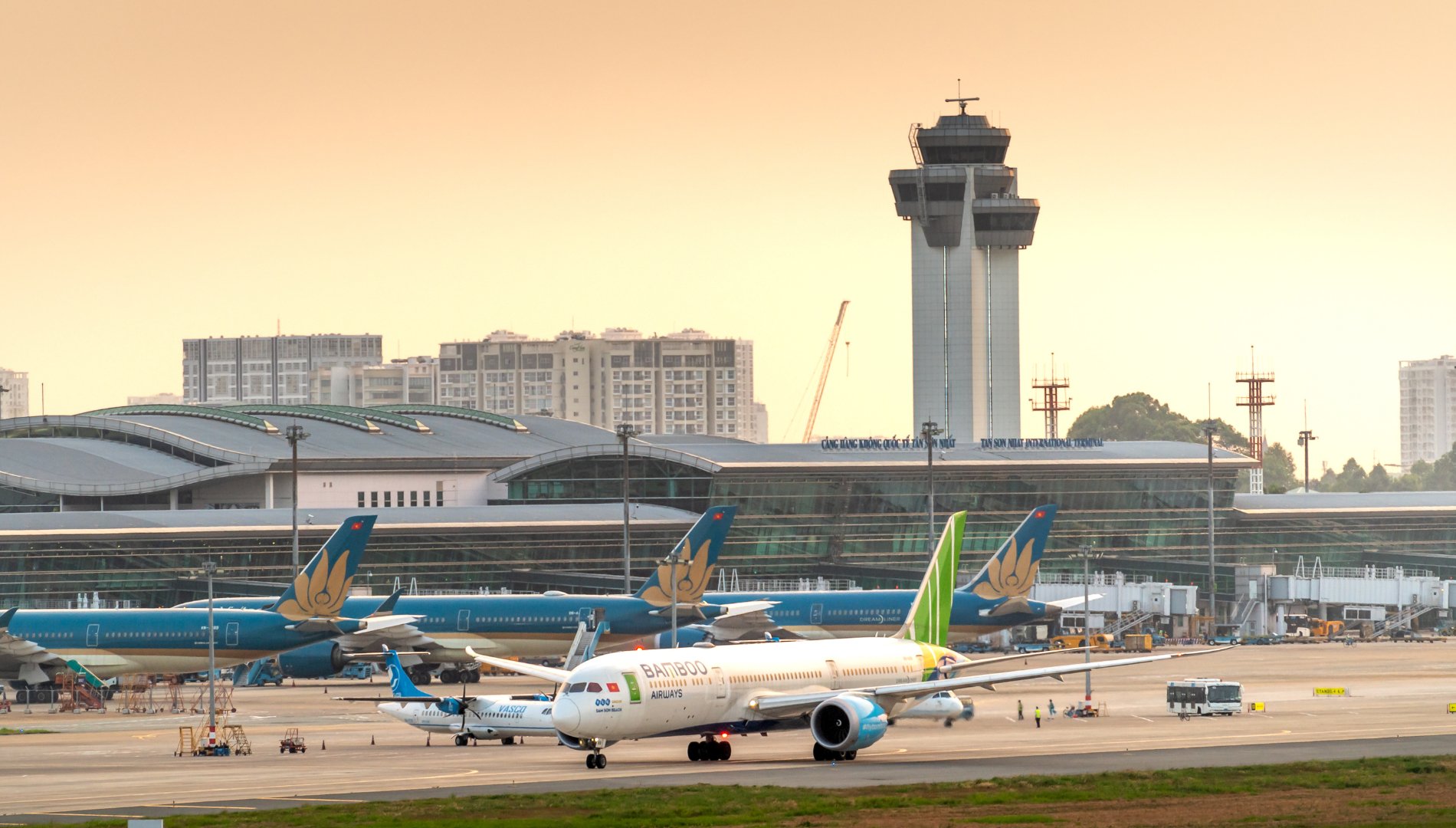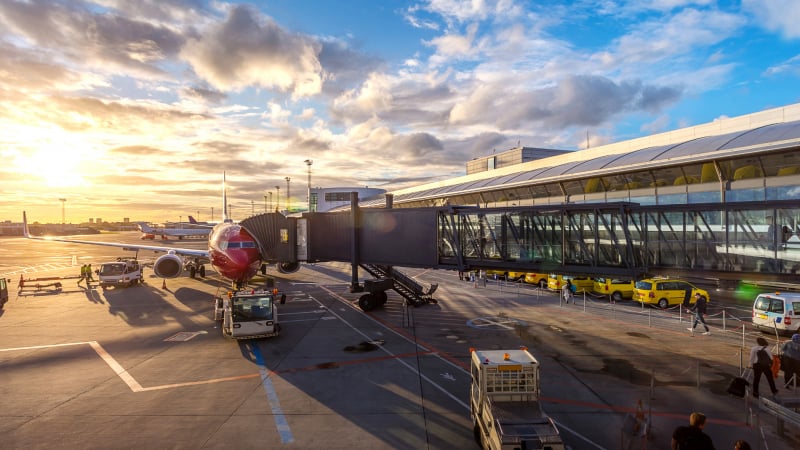The Airports Corporation of Vietnam (ACV) has just announced and implemented a bold plan to optimize service capacity, reduce pressure on infrastructure and bring a more convenient travel experience to millions of passengers each year. This major change is not only a technical adjustment, but also a strategic turning point, reshaping the way this vital airport operates.
According to the new diagram issued by ACV, Tan Son Nhat International Airport will be clearly divided into two main exploitation areas for domestic airlines, in order to end the chaos and overload in recent years. The highlight of this change is the near "exclusive" exploitation at the terminals of two domestic aviation giants: Vietjet Air and Vietnam Airlines.

According to the new plan, Terminal T1 with a designed capacity of 15 million passengers per year will be almost exclusively reserved for Vietjet Air to operate domestic flights.
Terminal T1, with a designed capacity of 15 million passengers per year, will be dedicated to Vietjet Air. To accommodate this major change, ACV has relocated the entire check-in area of this airline to Hall A, an area previously under the management of Vietnam Airlines. This concentration not only helps Vietjet passengers easily find the check-in counter but also creates a smooth flow, limiting the need to travel between halls.

To accommodate this change, ACV has rearranged the entire check-in area at Terminal T1.
Meanwhile, Hall B, with its prime location, will be renovated and completely converted into a modern transfer hall. This hall will act as an important bridge, connecting passengers moving between the three main terminals T1, T2 and T3. To ensure convenient and quick movement between terminals, ACV has arranged specialized transfer bus routes, operating on internal airport roads. This not only helps passengers save time but also significantly reduces traffic congestion outside the terminal area, which has been a headache for many years.
Terminal T3, a new project put into operation with a designed capacity of up to 20 million passengers per year. This terminal will become the new domestic hub, where Vietnam Airlines Group (including Vietnam Airlines, Pacific Airlines, VASCO) and two airlines Bamboo Airways and Vietravel Airlines will operate.

Meanwhile, Hall B will be renovated and converted into a transfer hall, serving as a connection for passengers moving between three terminals T1, T2 and T3.
Here, ACV has made a scientific and reasonable allocation of check-in counter locations to optimize the check-in process. Vietnam Airlines, as the national airline, is given priority to operate in the largest area, from counters 56 to 109, creating favorable conditions for serving a large number of passengers. Bamboo Airways, a dynamic airline, will serve passengers in the area from counters 43 to 52. Meanwhile, Vietravel Airlines is located at counters 25 to 31. For VASCO, the airline operating special routes to Con Dao, Rach Gia and Ca Mau, will have its own check-in counter in areas 19 to 24. Finally, Pacific Airlines will serve passengers at counters 11 to 18.
This arrangement not only makes it easier for passengers to find their check-in area, but also reduces queuing and waiting, contributing to improved service quality. Although Terminal 3 is the focal point of the change, Terminal 2 will retain its role as the international terminal, serving all international flights and with a capacity of 17 million passengers per year.

With this change, passengers need to pay special attention to the terminal information on their flight tickets.
With these big and sudden changes, the most important thing for passengers is to be cautious and proactive. To have a smooth trip, passengers need to pay special attention to the terminal information printed on their flight tickets. Before going to the airport, check again to confirm exactly which terminal your airline will depart from. In the early stages of applying this new regulation, confusion about the terminal is inevitable. Therefore, the best advice is to arrive at the airport earlier than usual to have enough time to handle arising situations and avoid missing the flight.
The changes at Tan Son Nhat International Airport are an inevitable step to meet the development needs of Vietnam's aviation industry. Although they may cause some initial confusion, in the long run, these changes promise to bring a more efficient, convenient and civilized travel experience for everyone. This is a testament to ACV's relentless efforts in improving infrastructure and services, bringing Vietnam's aviation industry to a new level.



































